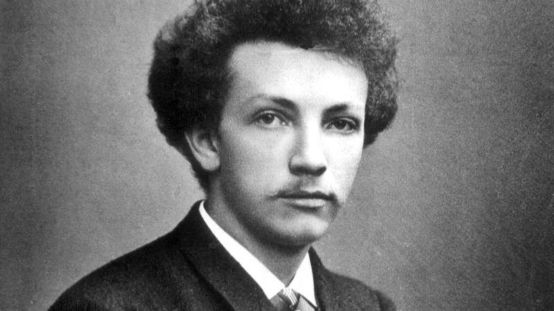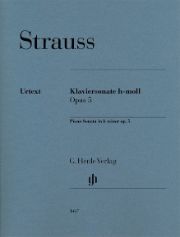The sixteen-year-old's sense of form and brilliance
This early piano work by Richard Strauss refers in places to the opera composer.

The piano works of Richard Strauss are not exactly extensive and were written almost exclusively in his early years. In addition to a few smaller occasional compositions, the Mood pictures op. 9 and the Piano Sonata in B minor op. 5. The latter was composed in the winter of 1880/81, when the composer was just 16 years old. And it amazes and fills one with respect when one sees how confidently the young musician was able to shape such a large-scale, four-movement sonata.
The work has already been recorded on various records and CDs. Not least, Glenn Gould also championed it. However, this sonata is very rarely heard in concert. What are the reasons for this?
It cannot be due to the playability. The piano writing is excellent, in contrast to other works by Strauss, such as the intricate Burlesque in D minor or the tricky piano part in The citizen as nobleman. Perhaps this is due to the extensive first movement, Allegro molto, appassionato, which fulfills the formal requirements perfectly, but is somewhat tiring with its uncharacteristic themes and lengthy sequences. The piano writing here - in contrast to the following movements - is also not very inventive and somewhat poor pianistically. All in all, an uninspiring beginning.
This changes with the second movement, an Adagio cantabile in E major, whose main theme, a sweeping melody on a beautiful carpet of chords, already reveals a little of the opera composer to come. This melodic bliss is interrupted by an elfish, later dramatically intensified intermezzo, which does not tolerate any fear of long leaps by either hand. The third movement, a whirling Presto, also demands a great deal of pianistic agility. The many fast notes, mostly played pianissimo, are strongly reminiscent of similar scherzos by Mendelssohn. In the concluding finale, Allegretto vivo, Strauss (as in the first movement) becomes somewhat more detailed again. Here, however, with so much temperament and beauty of sound that the 281 bars seem very short. All the more so as the sonata ends brilliantly and brilliantly in B major.
Peter Jost has published this early Strauss opus in an exemplary edition by G. Henle-Verlag. The clever and discreet fingerings are by Michael Schäfer.
Richard Strauss: Piano Sonata in B minor op. 5, edited by Peter Jost, HN 1467, € 11.00, G. Henle, Munich








